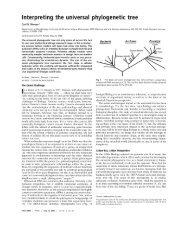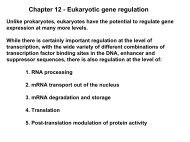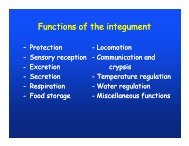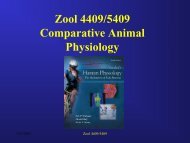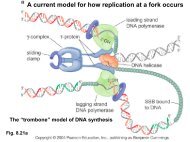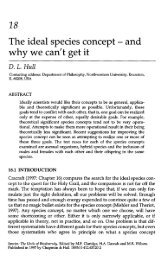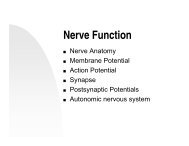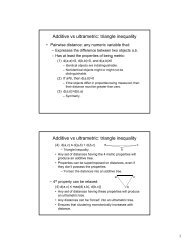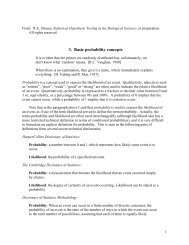Mayden, 1997 - Texas Tech University
Mayden, 1997 - Texas Tech University
Mayden, 1997 - Texas Tech University
You also want an ePaper? Increase the reach of your titles
YUMPU automatically turns print PDFs into web optimized ePapers that Google loves.
414 A hierarchy of species conceptsothers today is any historically formed group wherein the ancestor and allits descendants are included in a phylogenetic nexus, also known asmonophyly. There is nothing operational about this definition; it is strictlya notion thought to be in harmony with the theory of descent withmodification and our empirical observations of the end products of thisprocess. Yet, most agree that while non-operational it is the appropriatetheoretical concept for groups assigned to supraspecific categories. It isimpossible to observe monophyly either historically or in real timebecause we do not witness the evolution of ancestors and their descendants,and the theoretical definition of monophyly provides no operationalguidelines. Without direct observation, we are incompetent in ourabilities to locate monophyly, unless we retain bridging principlesthrough some type of operational concept. The concept that we now useas a suitable surrogate to monophyly is that of synapomorphy. That is,operationally we recognize supraspecific taxa or monophyletic groupsthrough character analysis and the discovery of shared-derived charactersinferred to have evolved in a common ancestor and retained or existingas homologues in immediate descendants. There are, however, otherpossible concepts of monophyly (e.g. percent similarity, ability tohybridize, etc.) that could be employed. These are rejected because ofknown inconsistencies between alternative concepts and empirical andtheoretical observations of the real world. Families are no longer definedby a prescribed level of similarity greater than that expected of orders, butless than that of genera, because similarity does not always denote closerelationship. Likewise, the ability to reproduce is an ancestral feature oflineages and is retained unless there is anagenesis of some attribute(s)closely linked to reproductive success.Interestingly, the species problem can be seen to parallel the theoreticaland operational issues traditionally associated with supraspecific taxa andcategories. These separate problems are very similar if one is conscious ofthe ontological differences between species as taxa and species as category.Everyone has their own notion of what species as taxa really are. Inmany instances we use this concept to guide our perceptions, observations,and understanding about theoretical and empirical aspects of thenatural world (diversity, character evolution, speciation, ecology, physiology,etc.). The class concept species as category used in the assignment ofgroups from nature thought to fit its definition. Is there, or should therebe, a definition of species that is both theoretical and operational analogousto the relationship that exists for supraspecific taxa and categories?Should the concept of the species category be operational or should it betheoretical like the concept of monophyly for supraspecific groups? Eitherway, which concepts should be used? If operational, which of the availableoperations should be employed, if any? If theoretical, which theoryshould be used? Unlike the abundant discussions following from the long-



